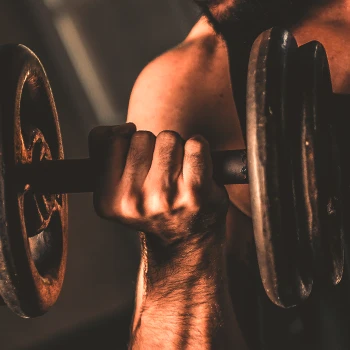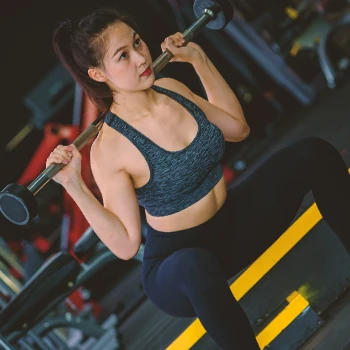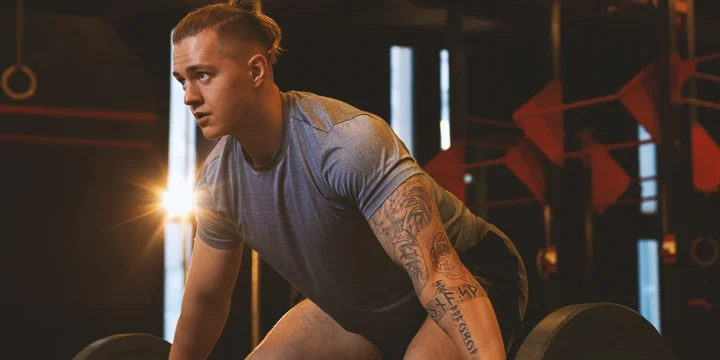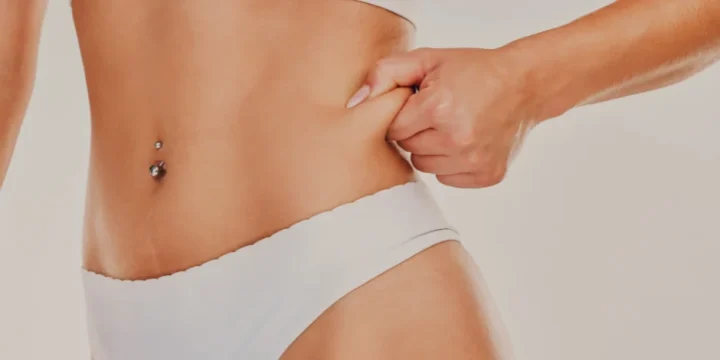As a fitness coach with over ten years of experience, I consider the PHAT workout routine (Power Hypertrophy Adaptive Training) as an effective approach combining powerlifting and bodybuilding principles.
Based on thorough research and practical application, I've discovered that PHAT effectively enhances strength and hypertrophy, providing a comprehensive training split for athletes aiming for versatile results.
In an effort to better explain it to my readers and clients, I conducted further research and consulted with a physical therapist. Here's what I found.
Quick Summary
- The PHAT workout routine includes two days of power training, a rest day, and three days of hypertrophy training before another day of rest.
- This workout routine combines elements of bodybuilding and powerlifting into a single program for muscle hypertrophy and strength benefits.
- A study in the International Journal of Sports Medicine showed that combining 3 weeks of strength training with 5 weeks of hypertrophy training resulted in more muscle and strength gains than an 8-week focus solely on hypertrophy.
- In my experience as a fitness trainer, I find the PHAT workout program advantageous because it's user-friendly, allows for more rest days, and efficiently maximizes gym time.
What Is a PHAT workout?

The PHAT (Power Hypertrophy Adaptive Training) workout is a comprehensive program that merges powerlifting and bodybuilding techniques to promote both muscle hypertrophy and strength development.
Dr. Layne Norton crafted the PHAT workout routine, featuring a five-day-a-week program that targets each muscle group twice.
The initial two days prioritize upper and lower body power training, followed by a rest day and three consecutive days of hypertrophy training.
"While pure bodybuilding style training may give you more growth over the short term, a combination of power and hypertrophy training over the long term is going to provide more muscle by increasing your growth potential. This is the basis for PHAT."
- Dr. Layne Norton, Powerlifter, Ph.D. in Nutritional Sciences
PHAT Program Fundamentals

Before we jump into the PHAT program, let's cover the basics.
Power Days
The first two days focus on lower and upper body power training, emphasizing compound exercises:
- Deadlift
- Squat
- Military Press
- Bench Press
- Barbell Row
- Weighted Dips
- Weighted Pull-Ups
According to the National Institute of Health, optimal rest is necessary when lifting maximally, so aim for about two to five minutes of rest [1].
Assistance Exercises
To enhance power days, incorporate assistance exercises targeting smaller muscle groups such as shoulders, hamstrings, calves, and arms.
Consider these supplementary exercises for your PHAT workout program:
- Leg Extensions
- Bulgarian Lunges
- Glute Ham Raises
- Standing Calf Raises
- Skull Crushers
- Cable Push Down
- Front Raise
Hypertrophy Days

After a rest day, allocate the next three days to pure muscle building by increasing reps, reducing rest, and aiming for 30–60 seconds between sets, as suggested by PubMed Research for optimal muscle hypertrophy [2].
Speed
On hypertrophy days, begin with explosive speed work using a lighter weight, approximately 65–70% of your power workout weight.
Traditional-style bodybuilding
Following the explosive work, transition to traditional bodybuilding training. The goal is muscle building, not breaking lift records. Use a light weight (50–75% of power days), aim for 12–20 reps, and reduce rest to 1–2 minutes between sets.
PHAT Workout Schedule

Before we get to the benefits, let’s see what such a workout could look like.
Here's a sample schedule for Power Hypertrophy Adaptive Training (PHAT):
Day 1: Upper Body Power Day
- Bench Press: 3 sets of 3–5 reps each
- Horizontal Rows: 2 sets of 6–10 reps each
- Weighted Pull-Ups: 2 sets of 6–10 reps each
- Weighted Dips: 2 sets of 6–10 reps each
- Dumbbell Shoulder Press: 3 sets of 6–10 reps each
- Pendlay Rows: 3 sets of 3–5 reps each
- Skull Crushers: 3 sets of 6–10 reps each
- Cambered Bar Curls: 3 sets of 6–10 reps each
Day 2: Lower Body Power Day

- Squats (3 sets of 3–5 reps each)
- Hack Squats (2 sets of 6–10 reps each)
- Leg Extensions (2 sets of 6–10 reps each)
- Leg Presses (2 sets of 6–10 reps each)
- Lying Leg Curls (2 sets of 6–10 reps each)
- Stiff-Legged Deadlifts (3 sets of 5–8 reps each)
- Seated Calf Raise (2 sets of 6–10 reps each)
- Standing Calf Raise (3 sets of 6–10 reps each)
Day 3: Rest
Day 4: Back and Shoulders Hypertrophy Day
- Bent-Over Rows (4 sets of 8–12 reps each)
- Dumbbell Rows (2 sets of 12–15 reps each)
- Seated Cable Rows (3 sets of 8–12 reps each)
- Weighted Pull-Ups (3 sets of 8–12 reps each)
- Upright Rows (2 sets of 12–15 reps each)
- Close Grip Pull-Downs (2 sets of 12–15 reps each)
- Seated Dumbbell Press (3 sets of 8–12 reps each)
- Dumbbell Side Lateral Raises (2 sets of 12–20 reps each)
Related: Best Back and Shoulders Workouts for Stronger Muscle
Day 5: Lower Body Hypertrophy Day

- Lunges (3 sets of 8–12 reps each)
- Squats (4 sets of 8–12 reps each)
- Leg Extension (3 sets of 15–20 reps each)
- Leg Presses (2 sets of 12–15 reps each)
- Stiff Legged Deadlifts (3 sets of 8–12 reps each)
- Seated Leg Curls (2 sets of 15–20 reps each)
- Lying Leg Curls (2 sets of 12–15 reps each)
- Standing Calf Raises (4 sets of 10–15 reps each)
- Seated Calf Raise (3 sets of 15–20 reps each)
Day 6: Chest and Arms Hypertrophy Day
- Incline Dumbbell Press (3 sets of 8–12 reps each)
- Flat Dumbbell Press (4 sets of 8–12 reps each)
- Incline Cable Flys (2 sets of 15–20 reps each)
- Hammer Strength Chest Press (3 sets of 12–15 reps each)
- Cambered Bar Preacher Curls (3 sets of 8–12 reps each)
- Spider Curls (2 sets of 15–20 reps each)
- Dumbbell Concentration Curls (2 sets of 12–15 reps each)
- Cable Press Downs with Rope (2 sets of 12–15 reps each)
- Cable Kickbacks (2 sets of 15–20 reps each)
- Seated Tricep Extension with Cambered Bar (3 sets of 8–12 reps each)
Day 7: Rest
Benefits of This Routine

Starting a PHAT workout routine, which combines power training and bodybuilding, is your way to getting a remarkable physique and incredible strength.
Bodybuilders love lifting more for added strength, allowing them to use heavier weights for greater muscle growth. Similarly, powerlifters gain from muscle growth—bigger muscles mean more strength potential.
As a fitness trainer, I've noticed that PHAT training not only makes the most of our time at the gym, but it's also straightforward, easy to do, and allows for more rest.
FAQs
How Long Does PHAT Workout Take?
How long a PHAT workout takes depends on how long you rest and warm up. However, they typically take about one to two hours each day. That's because the program partly focuses on lifting volume.
Is PHAT Training Effective?
Yes, PHAT training is effective as it helps bodybuilders add strength and powerlifters build more mass.
References:
- https://www.ncbi.nlm.nih.gov/pmc/articles/PMC3899651/
- https://pubmed.ncbi.nlm.nih.gov/19691365/
About The Author
You May Also Like






